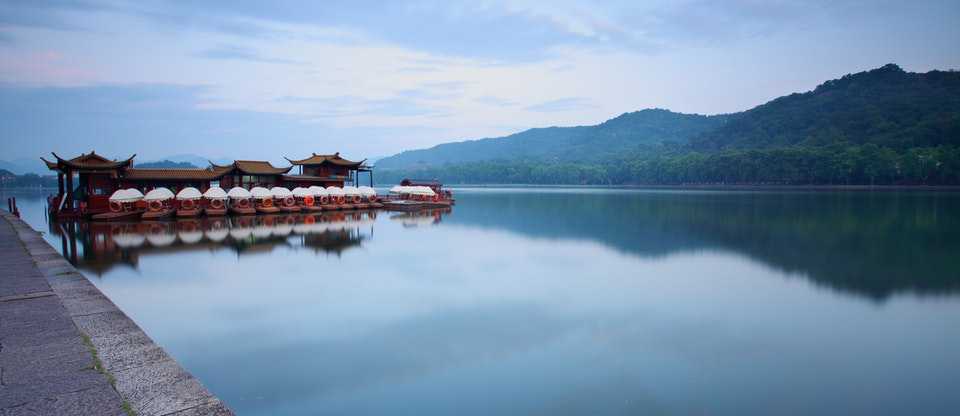Winter scenery of West Lake in Hangzhou
14 November, 2018

The very definition of classical beauty in China, West Lake is utterly mesmerising: pagoda-topped hills rise over willow-lined waters as boats drift slowly through a vignette of leisurely charm. Walkways, perfectly positioned benches, parks and gardens around the banks of the lake offer a thousand and one vantage points for visitors to admire the faultless scenery.
Originally a lagoon adjoining the Qiántáng River, the lake didn’t come into existence until the 8th century, when the governor of Hángzh?u had the marshy expanse dredged. As time passed, the lake’s splendour was gradually cultivated: gardens were planted, pagodas built, and causeways and islands were constructed from dredged silt.
Celebrated poet Su Dongpo himself had a hand in the lake’s development, constructing the S? Causeway (??; S?d?) during his tenure as local governor in the 11th century. It wasn’t an original idea – the poet-governor Bai Juyi had already constructed the Bái Causeway (??; Báid?) some 200 years earlier. Lined by willow, plum and peach trees, today the traffic-free causeways with their half-moon bridges make for restful outings.
Lashed to the northern shores by the Bái Causeway is G?sh?n Island (???; G?sh?n D?o), the largest island in the lake and the location of the Zhèji?ng Provincial Museum and Zh?ngsh?n Park. The island’s buildings and gardens were once the site of Emperor Qianlong’s 18th-century holiday palace and gardens. Also on the island is the intriguing Seal Engravers Society, though it was closed for renovations at the time of research, dedicated to the ancient art of carving the name seals (chops) that serve as personal signatures.
The northwest of the lake is fringed with the lovely Q?yuàn Garden, a collection of gardens spread out over numerous islets and renowned for their fragrant spring lotus blossoms. Near X?líng Bridge (X?líng Qiáo) is Su Xiaoxiao's Tomb, a 5th-century courtesan who died of grief while waiting for her lover to return. It’s been said that her ghost haunts the area and the tinkle of the bells on her gown are audible at night.
The smaller island in the lake is Xi?oyíng Island, where you can look over at Three Pools Mirroring the Moon, three small towers in the water on the south side of the island; each has five holes that release shafts of candlelight on the night of the mid-autumn festival. From Lesser Yíngzh?u Island, you can gaze over to Red Carp Pond, home to a few thousand red carp.
Impromptu opera singing, ballroom dancing and other cultural activities often take place around the lake, and if the weather’s fine, don’t forget to earmark the east shore for sunset over West Lake photos.
It's hardly needed, but musical dancing fountains burst into action at regular intervals throughout the night and day, close to Lakeview Park.
Crowds can be a real issue here, especially on public days off when it can seem as if every holidaymaker in China is strolling around the lake. Escape the jam of people by getting out and about early in the morning – also the best time to spot the odd serene lakeside taichi session.
The best way to get around the lake is by bike or on foot.
TAG(s):
